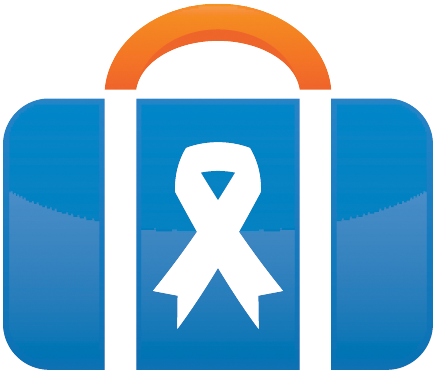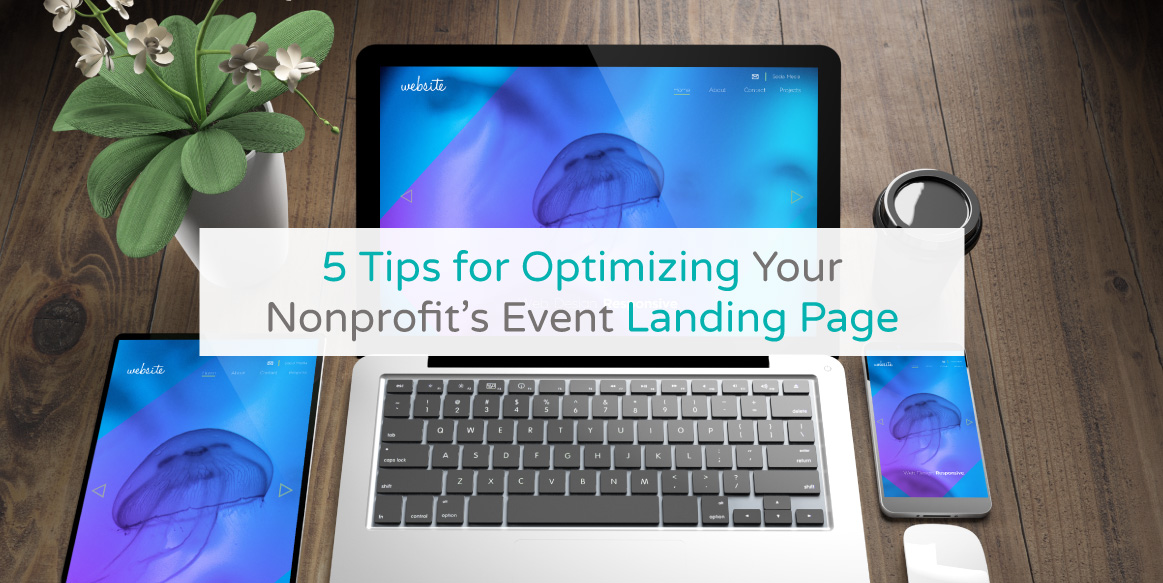Picture this: Your nonprofit is gearing up to host an exciting fundraising event. You’ve booked a venue, secured corporate sponsors, and shared promotional content on social media. You likely also created an event landing page on your nonprofit’s website, but is it optimized to drive as many registrations as possible?
Your event landing page should effectively introduce both your existing and new supporters to everything they need to know about your event. Here, you’ll create hype for your event, explain how the proceeds raised will support your mission, and offer supporters a streamlined registration process. Your event landing page shouldn’t just be informative, but also visually appealing to engage as many site visitors as possible.
However, if you don’t have web design experience, developing an effective event landing page may feel difficult. But with the right design tips and strategies, you’ll be in great shape to optimize your nonprofit’s event landing page. Keep these best practices in mind:
- Design with user experience in mind.
- Include all necessary event information.
- Offer easy-to-use registration forms.
- Encourage attendees to share event details.
- Sell products to boost event sales.
An essential tool to add to your design toolkit is a website builder. A nonprofit-specific website builder with a user-friendly interface can help you plug in your event content and create a standout design that will engage any site visitor that lands on your page. Armed with a comprehensive CMS, you can create a unique and personalized event landing page that inspires supporters to register. Let’s begin.
1. Design with user experience in mind.
The purpose of your event landing page is to intrigue site visitors with your event and encourage them to register. With these goals in mind, you’ll need to prioritize the user experience in your page design and ensure that it’s both fun and intuitive for site visitors to interact with.
Here are some user experience best practices you should follow when creating your landing page:
- Ensure the page is mobile responsive. It’s frustrating for smartphone and tablet users to use a web page that doesn’t resize to fit their devices. Make sure the website builder you’re using allows for automatic mobile responsiveness so that everyone can learn about your event and register, no matter what device they’re using.
- Adhere to accessibility guidelines. Familiarize yourself with the Web Content Accessibility Guidelines (WCAG) and take action to make sure your event landing page is accessible for visitors of all abilities. These guidelines include providing alt text on all images, putting closed captions on multimedia elements, and using high contrast colors between the background and foreground.
- Mix up text and visuals. People typically support causes because they feel a strong emotional connection to them. Tap into that emotional connection by mixing up blocks of text with striking visuals. For example, if you support at-risk school children by providing tutoring and school supplies, you might include a picture of students with new backpacks that were purchased with supporters’ donations. Make sure to compress these visuals so they don’t slow down your event landing page’s speed and frustrate users.
You could also include a video to engage supporters and help them learn more about your event and its greater purpose. Tectonic Video’s guide to video marketing for nonprofits recommends making a clear case for support and including video interviews with beneficiaries so supporters see where their contributions are going.
2. Include all necessary event information.
Your landing page should be a one-stop shop that provides all the information your site visitors will need when deciding whether they want to attend your event. Specifically, include these details:
- Logistics: Logistics covers the who, what, why, and where of your event. Clearly list the date and time for the event, the intended audience, planned activities, and location. Make sure to connect the event to your larger fundraising goals and your overall mission to show supporters your “why.”
- Entertainment and sponsors: Get your supporters excited to attend your event by listing out the entertainment, whether that’s a local band, performing group, or a speaker. You should also list your event’s sponsors, not only as a courtesy to them, but also to get your guests excited about things like bidding for auction items donated by your sponsors.
- Pricing and capacity: Be upfront about pricing and answer capacity-related questions by letting your supporters know, for example, if they need to purchase an entire table.
If you want to provide some bonus information, try adding opportunities for further engagement at the bottom of your event landing page. For example, if a supporter feels inspired to make an extra contribution to your organization after registering for the event, give them the ability to do so easily with an embedded event-specific donation page or a CTA that will take supporters directly to your annual giving page. You might also include information about your volunteer needs, matching gift opportunities, or your monthly giving program.
3. Offer easy-to-use registration forms.
The most important part of your event landing page is the registration form. This is the tool your supporters use to commit to attending your event and allows your organization to collect their ticket or registration payment. What this means for you is that it’s well worth your time to work on specifically optimizing your form for usability.
Use these tips to create a user-friendly and streamlined registration experience on your event landing page:
- Ensure your form is mobile responsive so supporters can register for your event anywhere at any time, as long as they have their phone in hand.
- Keep the form short by only asking for necessary information and marking optional fields. For example, you should definitely request the supporter’s name, contact information, and billing information. Other details, like how supporters found out about your event, can be marked optional.
- Offer multiple payment options, including credit card, debit card, and ACH payments, and communicate to your supporters that your payment processor is secure.
When your registration form is fast, convenient, and easy to use, you’ll reduce the chance that your supporters will abandon their registration part way through, ensuring you’ll have a full house the day of your event.
4. Encourage attendees to share event details.
Whether your fundraiser is taking the form of a hybrid auction or a family-friendly movie night, a loyal supporter who has just completed their registration will likely be eager to help further promote your event. All you need to do is provide the tools for them to do so.
According to Morweb’s guide to the best nonprofit websites, many organizations embed live social media feeds and social icons into their web content so supporters can share any piece of content with their personal networks. The right website builder can help you integrate your social media with your event landing page and provide social icons on your page, such as to Facebook and Twitter, so supporters can easily repost your event details.
You’ll likely also need to encourage your supporters to take action. Try appealing to them on your registration confirmation page by saying something like, “Thank you for registering for our virtual gala! Share the event details with your friends and family so we can all gather together to support our mission to save stray cats and dogs.”
You could also gamify social sharing. For example, put supporters’ names in a raffle when they share your event details on Instagram and tag your organization or when they share your event page on Facebook. You can announce the raffle winner at your event.
5. Sell products to boost event sales.
To boost your event revenue, consider selling products to your supporters. A nonprofit-specific CMS can help you set up an online storefront with a simple and secure checkout process, allowing you to pull in some extra fundraising dollars.
Consider selling branded items like:
- T-shirts
- Cups
- Pens
- Drawstring bags
- Keychains
You can also get creative and sell products that match the theme of your event. For example, if you’re hosting a garden tea party, you might encourage your supporters to also buy some flower seed packets during their registration process.
Event planning is an intensive process, but an integral part of making sure your event is as successful as possible. To optimize your event landing page and attract as many registrants as possible, design an informative and engaging page with the help of a nonprofit-specific website builder. The right CMS will come with a full suite of comprehensive features, from ready-to-go nonprofit website templates to customizable forms, so you can design your beautiful event landing page with ease. Good luck!




